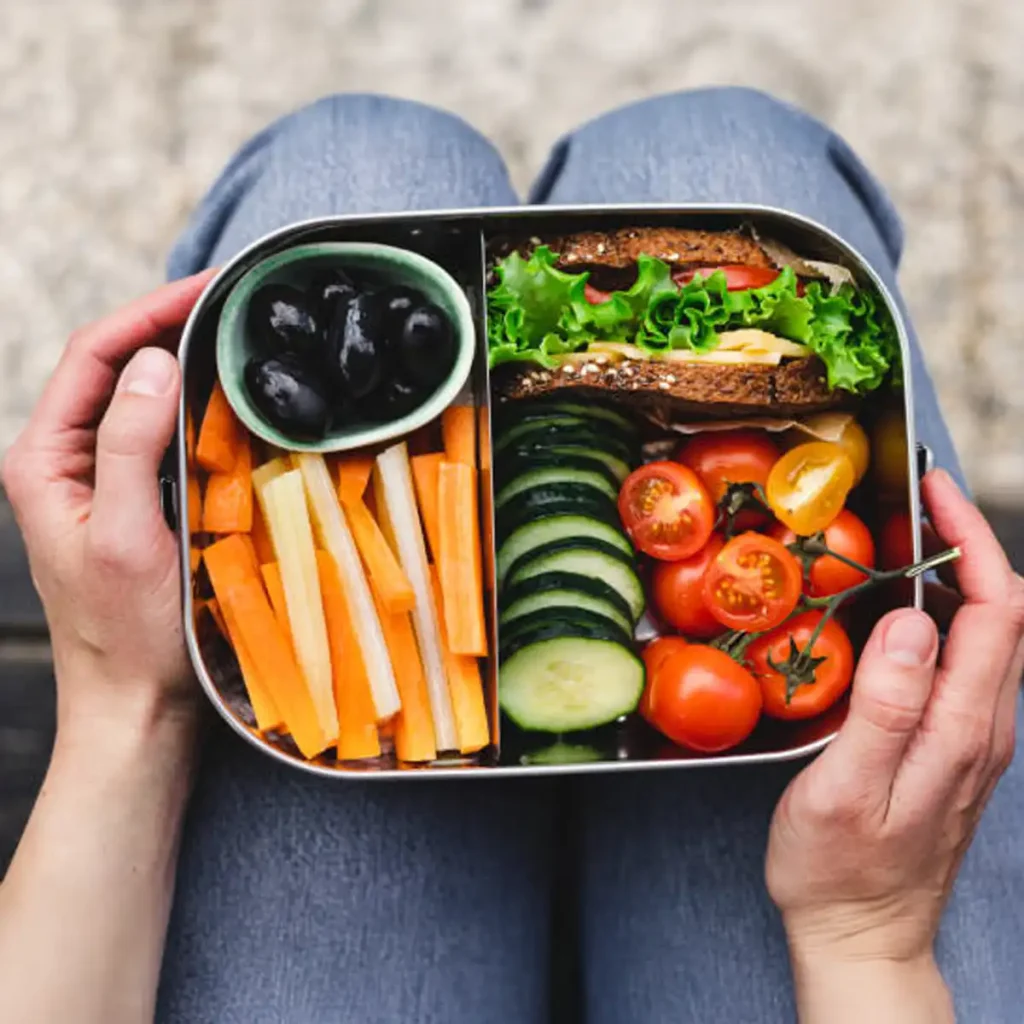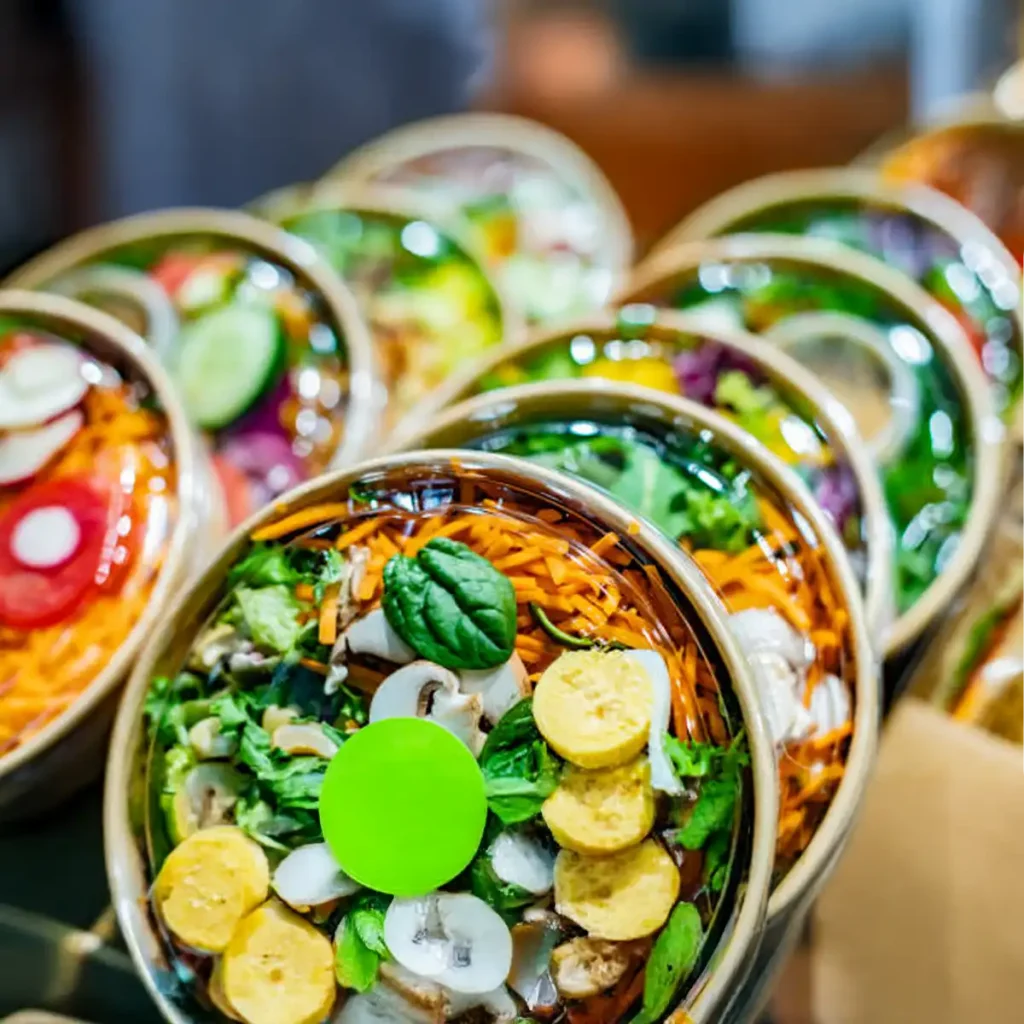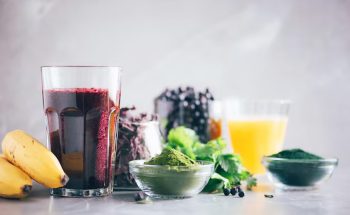The city has a new lunchtime habit. Office workers who once queued for meal deals and wilting sandwiches are now reaching for something crisp, bright and satisfyingly light. Rice paper rolls have crossed from Vietnamese kitchens into London life, carried by a broader shift toward evidence-based eating that values plants, fibre and flavour. This is not a fad or a quick purge. It is a practical, low-effort way to eat well on busy days, aligning with the recommendations of nutrition science that have been urged for years. If you want a smarter urban detox, start by supporting the systems your body already has in place. Choose food that helps your gut, steadies energy and keeps you full without excess calories. That is where rice paper rolls excel.
Londoners are responding to three pressures at once. Time is short, food costs are up, and many want a lunch that helps them feel sharp through the afternoon rather than drowsy. A well-built roll is compact, portable and fresh. It can be made the night before, packed with crunchy vegetables and lean protein, and paired with a balanced dip. It fits plant-forward goals, supports gut health, and avoids the refined starch load that can weigh down a midday sandwich. The format is versatile, so it works for vegan, vegetarian, pescatarian and meat-eating households alike. Most importantly, it is grounded in simple kitchen practice rather than health theatre.
The Case For A Smarter Urban Detox
Traditional detox claims promised to flush toxins with juices or teas. That story has not held up to scrutiny. The liver, kidneys, lungs, gut and skin already manage elimination, provided you give them sensible support. A modern detox diet looks less like restriction and more like routine. Hydration, fibre, diverse plants, adequate protein, and sleep do more for you than any purge. Rice paper rolls fit this frame. They deliver vegetables in volume, offer space for herbs and fermented elements, and encourage portion awareness without fuss. They help you reduce ultra-processed choices at the exact meal where convenience often wins.
The urban lens matters. Commuting, office snacks, and evening social plans make it harder to make healthy choices. If you want to switch to a stick, you need a lunch that is easy to prepare, travels well, and tastes good cold. A roll meets those requirements. It is also a format that invites habit stacking. Add a kefir-based dip for a probiotic nudge. Swap in a handful of shredded red cabbage to raise polyphenols. Use baked tofu or poached prawns to secure protein. Minor upgrades move the dial.
What Rice Paper Rolls Do For Nutrition And Satiety
Think of the wrapper as a neutral carrier. One sheet typically contributes modest calories. The real work happens inside. When you pack a roll with mixed vegetables, a palm of protein and a small portion of healthy fat, you create a meal with a high ratio of nutrients to energy. That supports a steady afternoon.
Key advantages include the following:
Low-calorie lunch potential when built with vegetables, lean protein and restrained sauces.
High fibre foods such as carrots, peppers, cabbage and salad leaves feed the microbiome and support regularity.
Lean protein from sources like tofu, prawns, chicken, edamame, or chickpeas helps promote satiety, muscle maintenance, and stable blood sugar levels.
Healthy fats from avocado, crushed peanuts, or sesame help keep flavours satisfying, and slow digestion is beneficial.
Hydration through water-rich vegetables, which matters during long office hours or warm commutes.
The satiety effect is practical. Chewing crunchy vegetables and herbs slows eating. That gives time for fullness signals to arrive. You feel fed by volume, scent and texture rather than by dense starch.
Gut-Friendly Building Blocks For Better Digestion
Your gut thrives on variety. Rice paper rolls are an easy vehicle for the 30 plants a week habit that many dietitians encourage. Each roll can include 6 to 10 plant components without effort. The combination of soluble and insoluble fibre supports regular bowel movements and nourishes beneficial bacteria.
Useful building blocks
Prebiotic foods, such as leeks, spring onions, garlic, asparagus, and oats, can be added as a dusting of toasted oat crumbs.
Fermented foods in small portions, for example, a spoon of kimchi or sauerkraut tucked beside greens.
Fresh herbs like mint, coriander, and basil contain polyphenols that support microbial diversity.
Cruciferous vegetables such as red cabbage, broccoli stems cut into matchsticks, or rocket contribute compounds associated with liver enzyme support.
Fun fact: Red cabbage delivers anthocyanins that act as natural pH indicators, which is why a splash of lime turns it brighter on your plate.
Plant Forward Fillings That Work In London Life
Plant-centred does not mean austere. It means using plants as the main event. A roll permits you to pile in colour and crunch while keeping protein in balance.
Reliable combinations for flavour and balance
Market classic: Shredded carrot, cucumber, red pepper, mixed leaves, coriander, mint, baked tofu and a smear of tahini-lime.
Herb garden: Rocket, basil, parsley, ribbons of courgette, edamame, toasted seeds and a lemon-olive oil drizzle.
Omega-3 lift: Little gem, avocado, grated beetroot, smoked mackerel flakes, dill and yoghurt with mustard.
High street vegan: Napa cabbage, spring onion, crushed chickpeas, pickled radish and sesame-ginger dressing.
Prawn and mango: Crisp lettuce, mango batons, cucumber, prawns, chilli flakes and a light peanut sauce.
Where possible, aim for three colours per roll, a whole handful of leaves, and a palm-sized portion of protein. That ratio works for most adults who want a healthy lunch that won’t derail their energy later.
Fasting Windows And How To Break Them Well
Time-restricted eating is everyday in the city. If you follow a 16:8 fasting pattern, your first meal should be gentle on the stomach yet rich in nutrients. A pair of rice paper rolls can break a fast without a blood sugar spike, especially if you include protein and vegetables first, then dip sparingly. Start with water or unsweetened tea, eat slowly and stop when comfortably full.
Two points of caution
If you live with diabetes, have a history of disordered eating, are pregnant or have specific medical conditions, seek clinical advice before fasting.
Do not use fasting to compensate for low-quality choices. It works best alongside balanced diet habits guided by the NHS Eatwell Guide.
Common Detox Myths And What The Science Says
Myth one. You need a cleanse to remove toxins.
Reality. Your body manages elimination via the liver and kidneys. Support comes from hydration, fibre, protein and sleep, not extreme regimens.
Myth two. Detox teas target fat or specific toxins.
Reality. Claims are often vague. Reported benefits usually come from eating fewer ultra-processed foods and reducing alcohol or sugar for a time.
Myth three. Juicing is superior to whole foods.
Reality. Juicing can remove fibre that your gut bacteria need. Whole vegetables in a roll retain fibre, which supports satiety and digestion.
Myth four. All plant-based options are healthy.
Reality. Some vegan products are high in salt, sugar or saturated fat. A roll built from fresh produce with simple protein is a better baseline.


How To Build A Perfect Roll At Home
You need a board, a shallow bowl of warm water, and clean hands. The process is simple after one or two tries.
1. Soak a rice paper sheet for 5 to 10 seconds until pliable but not floppy.
2. Lay it on the board. Place leaves first to cushion the wrapper.
3. Add matchsticks of carrot, cucumber, pepper and any crucifer you enjoy.
4. Add a palm of protein, such as baked tofu, prawns, chicken breast, edamame or chickpeas.
5. Scatter herbs. Mint cools, coriander lifts, basil rounds out tomato or pepper notes.
6. Add a small fat element. Avocado slices or a teaspoon of crushed peanuts work well.
7. Fold the sides inward, then roll tightly from the bottom to seal.
8. Serve with a dip that is balanced rather than sugary.
A practical dip template
* 1 tablespoon natural yoghurt or smooth peanut butter.
* 1 teaspoon lime juice or rice vinegar.
* A splash of low-sodium tamari.
* Ginger or garlic to taste.
* Thin with water to the right consistency.
Pack rolls seam-side down in a lunch box with a small pot of dip. Keep cool until midday.
Where Can You Find Better Rolls Today
If you are new to rolling at home, try before you DIY. London’s food scene is full of reference points. Independent Vietnamese cafés, specialist salad bars and street food traders sell fresh rolls through lunch. Many supermarkets now stock rice paper sheets in the world foods aisle, and Asian grocers carry multiple sizes. Start with standard rounds, then explore larger sheets for heartier fillings once you are confident.
Look for signs of quality. A good roll shows tight wrapping, bright vegetables and generous herbs. The dip should be salty, sour, and a little sweet, rather than cloying. If it tastes heavy, it carries more sugar than you want from a workday lunch.
Sustainability Cost And Convenience For City Lunchers
The format suits sustainable habits. Rolls make excellent use of leftovers, from last night’s roasted vegetables to a few spare herbs. They reduce bread waste for households that do not finish a loaf every week. Ingredients are flexible across seasons, so you can shop at local markets and adjust fillings based on price and freshness. Once you own a pack of wrappers, each serving is inexpensive. The main cost is the produce you choose, which you can scale up or down.
From a time perspective, the method is efficient. Batch-prep vegetables on Sunday, store them in containers, and assemble in 10 minutes before bed. If you keep a consistent shortlist of fillings, shopping is straightforward and you can rotate flavours without planning fatigue.
Safety Notes And Who Should Take Extra Care
Rice paper rolls are gluten-free if you choose wrappers made from rice and water only. Always check labels if you have a peanut allergy, swap peanut sauce for a yoghurt-herb dip or tahini-lime. For shellfish allergies, use tofu, tempeh, chicken or edamame. People who take anticoagulants should moderate large swings in vitamin K intake from very leafy greens and speak with a clinician if in doubt. Individuals with IBS may initially prefer low-FODMAP choices, then expand their variety as tolerated.
Food safety is simple. Keep proteins chilled, use clean boards and eat within 24 hours of assembly for best texture. If transporting, add an ice block to your bag on warm days.
A Seven-Day Lunchbox Starter Plan
This outline helps you bank the habit while keeping preparation light.
Day 1. Baked tofu, red cabbage, carrot, coriander, mint, lime yoghurt.
Day 2. Prawns, cucumber, mango, chilli flakes, little gem, light peanut sauce.
Day 3. Chickpeas mashed with lemon, rocket, grated beetroot, parsley, and sesame.
Day 4. Smoked mackerel, avocado, dill, cucumber, lettuce, mustard yoghurt.
Day 5. Edamame, spring onion, napa cabbage, pickled radish, ginger-tamari.
Day 6. Chicken breast, peppers, basil, spinach, and tahini-lime.
Day 7. Mixed mushrooms sautéed, kale ribbons, garlic, miso-tahini.
Rotate the order to suit your week. Add a piece of fruit and water or unsweetened tea for a balanced midday set-up.
How This Fits Wider Public Health Guidance
Rolls alone will not transform health, but they map neatly to the NHS Eatwell Guide. Half the box can be vegetables. Include a source of protein at each lunch. Use healthy fats in small amounts. Choose water most of the time. Maintain movement and sleep. This is the steady work that powers genuine change. It also reframes detoxification as a matter of consistency rather than a spectacle. You are supporting the organs that already protect you by making lunch simpler and better.
Conclusion: Upgrade Your Lunchbox With Evidence
London’s shift to rice paper rolls is more than a trend. It is a quiet vote for foods that respect both flavour and physiology. The wrapper is a canvas. The fillings are your habit. Build lunches that supply plants, fibre and protein in balance. Use herbs to lift the taste. Add fermented touches for your microbiome. Break fasting windows gently when you use them. Skip the theatre of cleanses and focus on practices you can keep.
A balanced roll is not a cure-all. It is a dependable tool in an everyday plan. Make it well, and the afternoon feels clearer, the commute lighter, and dinner decisions easier. As the proverb goes, look after the pennies and the pounds will look after themselves. Small, consistent choices at lunch add up to better health over time.





